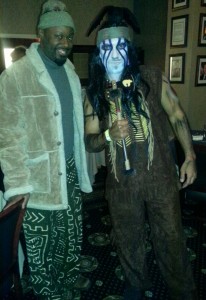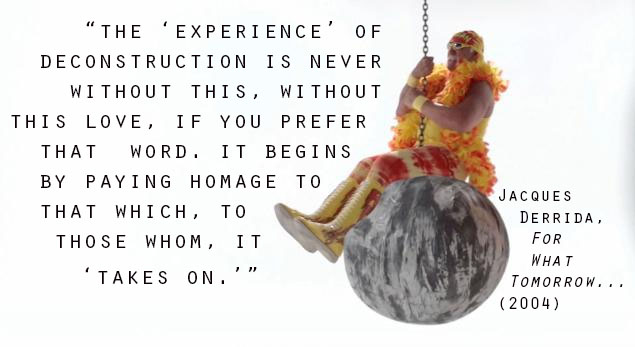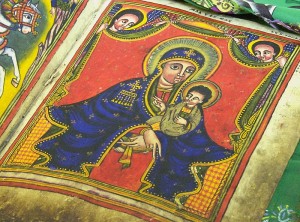 There’s been a series of commentaries online recently on the topic of using the term “data” when naming the (what shall we call “it”?) …, stuff that we, as scholars, study — commentaries driven by worries, in many cases, that this word erases the inherent worth and humanity of the people so named. The members of Culture on the Edge tackled this topic both here and here, all in favor of an informed/specific use of this technical term, and a more diverse group of responses also appeared at the Bulletin blog (here and then also here). Continue reading “Erased”
There’s been a series of commentaries online recently on the topic of using the term “data” when naming the (what shall we call “it”?) …, stuff that we, as scholars, study — commentaries driven by worries, in many cases, that this word erases the inherent worth and humanity of the people so named. The members of Culture on the Edge tackled this topic both here and here, all in favor of an informed/specific use of this technical term, and a more diverse group of responses also appeared at the Bulletin blog (here and then also here). Continue reading “Erased”
Trick or Trick?
 A recent occurrence of misrecognition reminded me of two Culture on the Edge blog posts written this past summer (see here and here) in which Russell McCutcheon wrote about what it might mean to see the ordinary as curious in one post and another on public conversations on the role of identity in the movie, The Lone Ranger. In the former post, McCutcheon asked a simple question underneath a picture of Baka people performing for Pope Benedict XVI as he departed for Angola, “who is wearing a costume?”
A recent occurrence of misrecognition reminded me of two Culture on the Edge blog posts written this past summer (see here and here) in which Russell McCutcheon wrote about what it might mean to see the ordinary as curious in one post and another on public conversations on the role of identity in the movie, The Lone Ranger. In the former post, McCutcheon asked a simple question underneath a picture of Baka people performing for Pope Benedict XVI as he departed for Angola, “who is wearing a costume?”
If we take seriously theories of performativity and the role of the discursive in processes of identification as forcefully articulated by thinkers such as Judith Butler, then we know that something like Halloween occurs every day where we un/consciously present who we are/aren’t/want to be to the social world in which we participate in. Continue reading “Trick or Trick?”
Boo
 Happy Halloweening,
Happy Halloweening,
from your friends
at the Edge.
“Ferragamo Belts and America’s ‘Sagging’ Image of Racism”
On Paying Homage
 Read more.
Read more.
“Hoi Polloi”
 As a native Greek speaker, the words in English that give me most trouble—especially when I find myself at various conferences or lectures in North America that involve, in some way or another, the use of Ancient Greek—is the pronunciation of those words. I admit that I can’t resist the temptation of correction for example whenever I hear Thucydides (pronounced: Thu-si-di-dees) instead of Θουκυδίδης (pronounced: Thu-ky-theē-thees). But once I found myself in an awkward position where context made the text if not unrecognizable but certainly irrelevant. Continue reading ““Hoi Polloi””
As a native Greek speaker, the words in English that give me most trouble—especially when I find myself at various conferences or lectures in North America that involve, in some way or another, the use of Ancient Greek—is the pronunciation of those words. I admit that I can’t resist the temptation of correction for example whenever I hear Thucydides (pronounced: Thu-si-di-dees) instead of Θουκυδίδης (pronounced: Thu-ky-theē-thees). But once I found myself in an awkward position where context made the text if not unrecognizable but certainly irrelevant. Continue reading ““Hoi Polloi””
Class Visitor
![]() Culture on the Edge in the news — Kat Daley-Bailey took us up on our class visit invite and wrote an article on her first experience using Skype in class.
Culture on the Edge in the news — Kat Daley-Bailey took us up on our class visit invite and wrote an article on her first experience using Skype in class.
See what you think.
“What Privilege it Must Be to Misrecognize a Trick for a Treat”
 Have you read Monica Miller‘s recent post…? You should.
Have you read Monica Miller‘s recent post…? You should.
On Redescription
 Learn more.
Learn more.
Strategic Images

How can people portray revered figures, like the icon of Mary and Jesus above from Ethiopia? News reports from Jharkhand in eastern India have described a conflict over a statue of the Virgin Mary. (View an image of the statue here.) Some leaders of the Sarna community, what is often labeled a “tribal” community in India, have complained that the statue depicts her in the traditional dress of the Sarna and with a dark complexion. Some have speculated that the image is designed to confuse the local population into associating the statue with the local goddess Sarna Ma, thus encouraging conversion to Christianity. Sarna who identified as Christians assert their right to present Mary in dress that they associate with their heritage. Subsuming local divine figures into a different configuration to facilitate conversion is often described as a common practice in different historical and regional contexts. Continue reading “Strategic Images”

